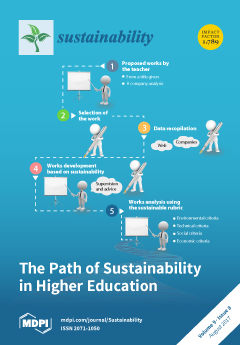Open AccessReview
Processing, Valorization and Application of Bio-Waste Derived Compounds from Potato, Tomato, Olive and Cereals: A Review
by
Caroline Fritsch, Andreas Staebler, Anton Happel, Miguel Angel Cubero Márquez, Ingrid Aguiló-Aguayo, Maribel Abadias, Miriam Gallur, Ilaria Maria Cigognini, Angela Montanari, Maria Jose López, Francisca Suárez-Estrella, Nigel Brunton, Elisa Luengo, Laura Sisti, Maura Ferri and Gianluca Belotti
Cited by 137 | Viewed by 20589
Abstract
The vast and ever-growing amount of agricultural and food wastes has become a major concern throughout the whole world. Therefore, strategies for their processing and value-added reuse are needed to enable a sustainable utilization of feedstocks and reduce the environmental burden. By-products of
[...] Read more.
The vast and ever-growing amount of agricultural and food wastes has become a major concern throughout the whole world. Therefore, strategies for their processing and value-added reuse are needed to enable a sustainable utilization of feedstocks and reduce the environmental burden. By-products of potato, tomato, cereals and olive arise in significant amounts in European countries and are consequently of high relevance. Due to their composition with various beneficial ingredients, the waste products can be valorized by different techniques leading to economic and environmental advantages. This paper focuses on the waste generation during industrial processing of potato, tomato, cereals and olives within the European Union and reviews state-of-the-art technologies for their valorization. Furthermore, current applications, future perspectives and challenges are discussed.
Full article
►▼
Show Figures





